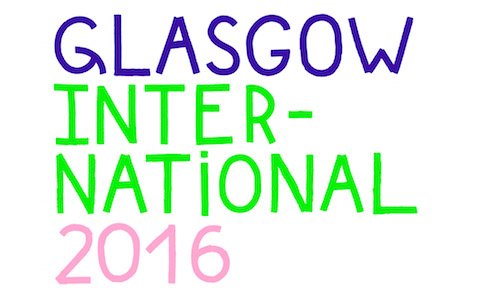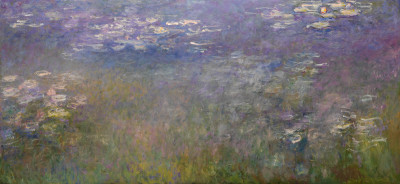This edition of the 9th Liverpool Biennial opened on 9th July (the best day ever) and will conclude on 16th October. (And as far as I know, all (if not most) of things programmed are free. So regardless of what I say down below, always worth remembering there is no monetary risk in finding out whether or not you enjoy what is on display.
I took a day trip (and as with all day trips) there was only so much I was able to see. So. This review shall come in three parts.
1.
Things I saw that were worth my time.
2.
Things I saw that weren’t worth my time.
3.
Things I wish I had seen that I feel would have been worth my time.
As with everything, let’s start at the beginning.
1. Things I saw that were worth my time.
FACT
Krzysztof Wodiczko has a solo exhibition at FACT, and as part of his body of work, there is a restaging of his piece that was part of the Venice Biennale in 2009, named ‘Guests’. This piece of work is one of the best things I have seen in a long time. Despite being made 7 years ago, this work is something that still holds true (and so relevant) to our current global climate. By cleverly using light projections to create life-size silhouettes Wodiczko highlights many realities for immigrants. This work gives a voice to those who often aren’t able to speak. An entire room houses the installation, so you are surrounded by these ‘invisible faceless’ people, all speaking their mother tongue. Each section simultaneously tells a story of someone from a different country in a different language, so when you first enter the space things are indistinguishable until you choose a ‘window’ to focus on. I have to say, not many visual art pieces have had a deep emotional impact on me, in fact only a visit to Henri Matisse’s Chapel in Vence has made my cry. (A beautiful piece of artwork for another post.) But this piece, ‘Guests’ by Krzysztof Wodiczko made me cry. Everything about it is so important. And it all comes back to one simple point. It’s easy to blindly group together people under the title of ‘immigrant’ and not really give a thought to the individuals in that group. But when you stop to listen to their stories, fluently in their mother tongue that they can’t use as they used to, having to deal without everyday necessities that we take for granted, you see the humanity placed back into that blanket term ‘immigrants’. And that’s so important. We seem to have forgotten this important point. That simple fact: that we are all human.

Seriously, I can’t recommend this solo exhibition enough, the rest of it is just as worth your time, particularly a clever use of projections of war veterans speaking about their experiences of war on a memorial of Abraham Lincoln.
This was definitely worth my time. (And would be yours too.)
Bloomberg New Contemporaries
As is customary with the Bloomberg New Contemporaries (work by new graduates), they show somewhere else before making it down to London showing at the Institute of Contemporary Arts (usually in November.) For me, there was one stand out piece of this year's edition of the Bloomberg New Contemporaries (showing at Bluecoat). It’s placed in the room upstairs, at the far end, and is a video on a TV screen. Please, please, please, take the time to put on the headphones and watch the work by Zarina Muhammad. She’s produced two videos, but for me, my favourite is called Digjihad (2015) and lasts for just over two minutes. She takes all the memes, everything on the internet, the gifs, the sparkly text, all the videos, on ISIS etc and creates this masterpiece that is so bad it’s good. It’s brilliant. And the song that accompanies the video is so great that I have no words. If you can’t check it out in Liverpool, and you can get to London when it’s on there, do go and see it. This I loved.
Tate Liverpool
Again, (I’ve just noticed) all these three pieces I’m talking about are related. Like cousins that get along swimmingly at family gatherings. Anyway, the third and final piece that was worth my time was a piece in Tate Liverpool. It is an approx. 4 minute video by Ramin Haerizadeh, Rokni Haerizadeh and Hesam Rahmanian called Big Rock Candy Mountain (2015). It’s an animation that has been created by using stills from film footage of ISIS militants destroying historical artefacts and toppling statues in Iraq and Syria. The fallen monuments are reanimated, given a new life, and the soldiers turned into new (and sometimes mocking) figures. What I like about this, is that the artists are creating something new from something destroyed. They’ve created a new version of censorship from the rubbles of a misguided, horrific act.
2. Things I saw that weren’t worth my time.
FACT
There was a video upstairs in FACT. After having seen the fantastic-ness that was downstairs with Wodiczko’s work, this paled in comparison. It's called Pharmakon by Lucy Beech and it was questioning the idea of hypochondria in the modern world, and the solace you can take in others. It was filmed in a way that roused intrigue, but ultimately it wasn’t something that grabbed me, and not something I would classify as a piece of video art. It read more as something for the cinema. Too much acting for my liking. And something that was never resolved. Call me impatient, but it just wasn’t my cup of tea. (Worth noting, that some friends I was with enjoyed it, so it all comes down to opinion. As always.)
Tate Liverpool
Everything else at Tate that wasn’t that video mentioned above. I know, I know. Perhaps it was because it was the last thing we saw. But, to be fair, I think the themes of this edition of the Biennial didn’t work in its favour, and this room was completely dedicated to it, and it just didn’t work. But I’ll go onto that later.
Liverpool ONE
This was a piece that I was most looking forward to. It's called 'To-day 9th of July 2016' by Mariana Castillo Deball. It is meant to represent the history of 9th July across many years in a large sculptural form that looks like a set of wooden stairs. Only it wasn’t what I expected. And the newspapers that were part of the piece (that was being used as a giant picnic bench (which I have no problem with, that’s just how people were interacting with it as it is located in a public space) were nowhere to be seen. Basically it wasn’t being maintained very well, and I know that part of it is ‘leaving it to the elements’ but it would have been nice to see a newspaper. Even if it was one we couldn’t have taken away. The description of this piece online and in the free brochure you can get (that we picked up from the train station) promised so much more to what was offered. Which you can read
here. (That way you can decide for yourselves.)
3. Things I wish I had seen that I feel would have been worth my time.
Rhiwlas Street
Now, this is a site-specific installation that is installed in a suburban area of Liverpool (and because of that reason, and being located in the city centre for the day) we were unable to see this. It looks like a really interesting and natural intervention with its environment. Something that is visually very striking and due to that can mean many different things to different people. It's called 'Momentary Moment - The Stone' by Lara Favaretto. Read some more about it
here.
Toxteth Reservoir
This piece is only available to view on the weekend (and as luck would have it, I visited on a Tuesday) so was unable to see it. Honestly, any work that plays with light peaks my interest and this was no exception. This would have definitely been seen had it been open. The artist of the work is Rita McBride.
So that’s it in terms of those three parts, of things I had seen and enjoyed, seen and disliked, and wish had been seen. Overall, Liverpool is a lovely city to experience via art, and as stated earlier, it’s free. But, the Biennial itself as a cohesive event didn’t feel very clear with its direction. The themes chosen felt very disjointed to the work. As if, at times, they were trying to make the theme fit these works even though you can’t fit a square key into a round hole.
Here is what the official website writes about this year's direction:
"Liverpool Biennial 2016 explores fictions, stories and histories, taking viewers on a series of voyages through time and space, drawing on Liverpool’s past, present and future. These journeys take the form of six ‘episodes’: Ancient Greece, Chinatown, Children’s Episode, Software, Monuments from the Future and Flashback. They are sited in galleries, public spaces, unused buildings, through live performance and online. Many of the artists have made work for more than one episode, some works are repeated across different episodes, and some venues host more than one episode."
Software, Ancient Greece and Chinatown etc all feel a little disjointed to be themes under one umbrella, and I feel that, that messiness in vision made the whole Biennial feel incoherent. It felt like separate divided pieces, rather than a whole. (The theme that took residence in the Tate, for those wondering, was Ancient Greece.) In any case, I look forward to seeing what form the next edition holds.
That’s it for my first experience of the Liverpool Biennial, one that I hoping to repeat despite not loving everything. But then again, it’s good not to always like everything you see, reaffirms the stuff you do like. So if you can, overall, it’s recommended. You just need to tailor your visit to you.




























